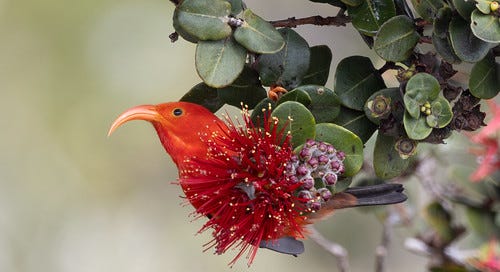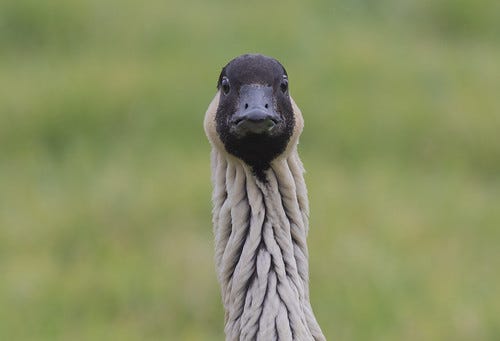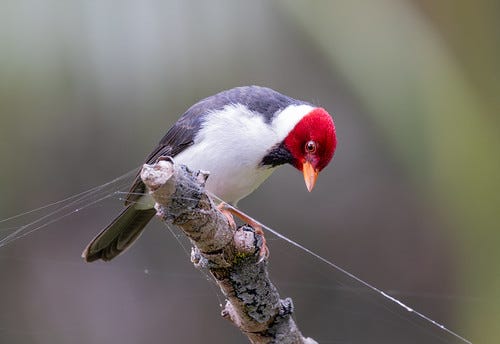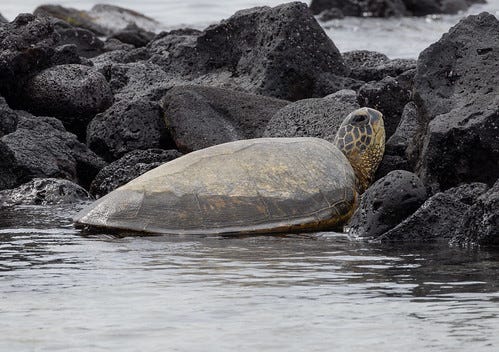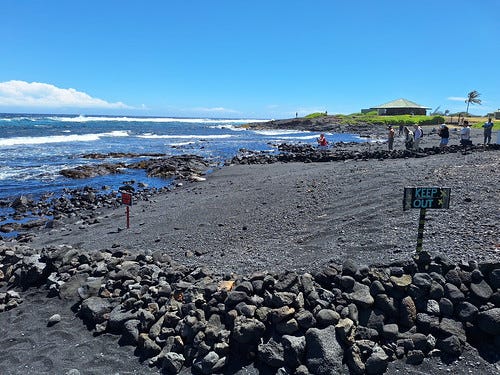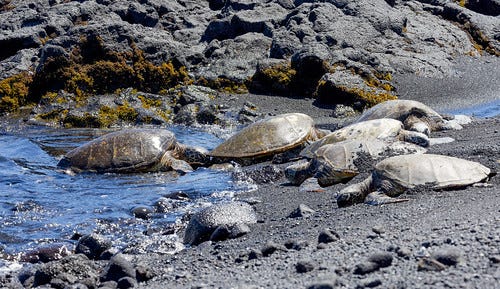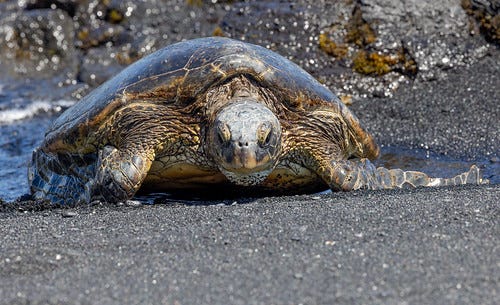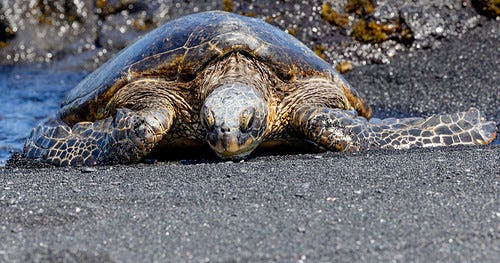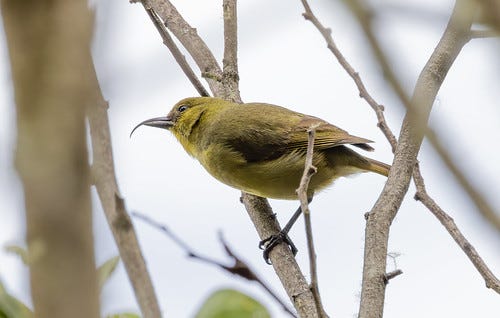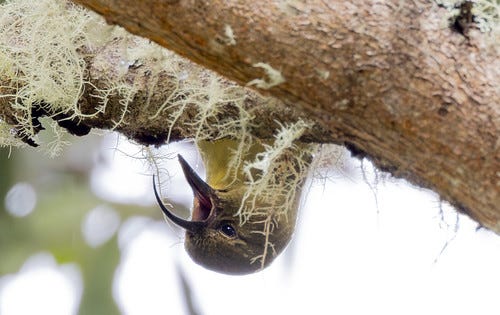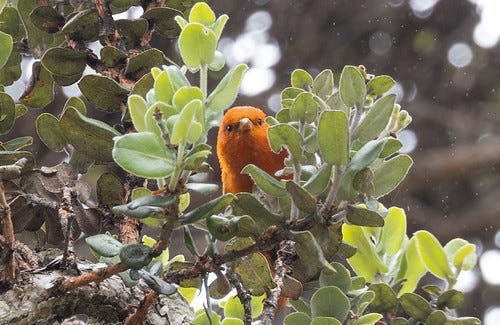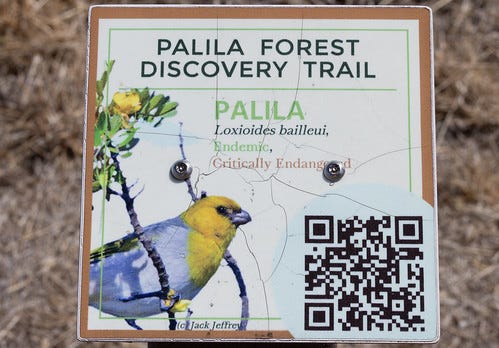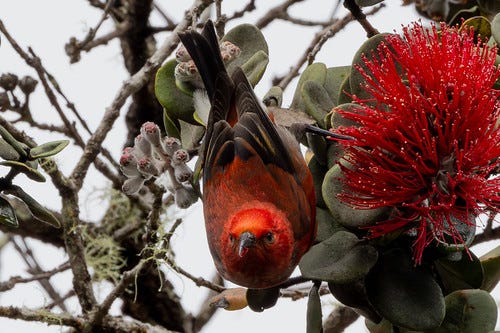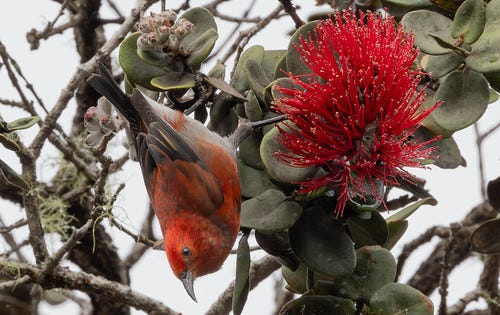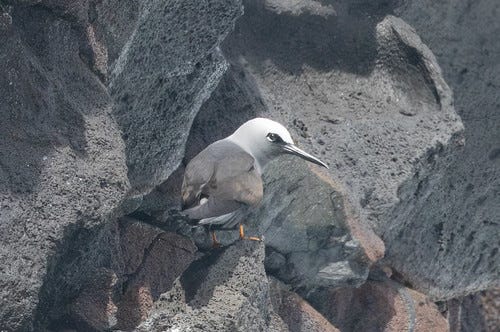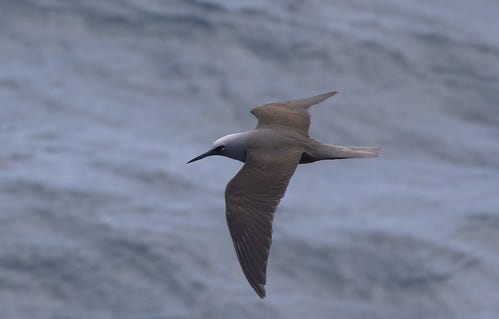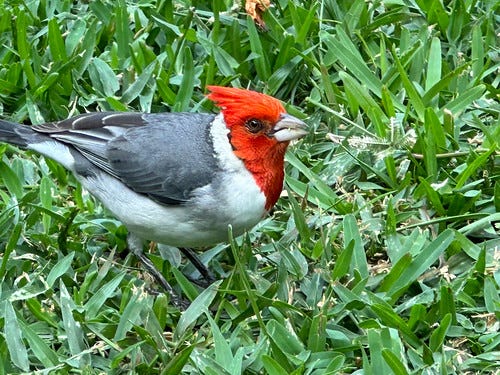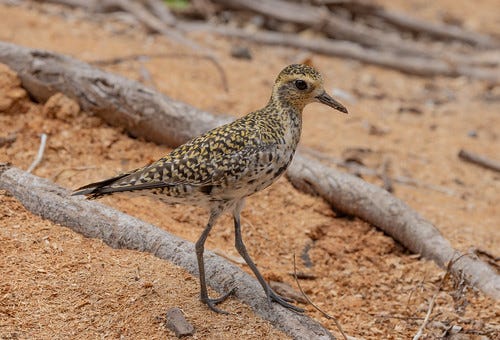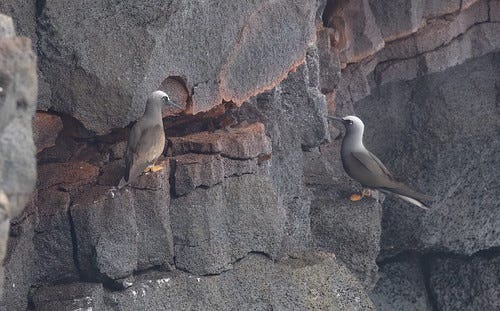(Listen to the radio version here.)
On March 3, Day 7 of our 15-day birding tour, Russ and I landed in Kona on the Big Island. I’d already added 13 lifers—more than I’d seen in Alaska two years before—and I’d already had some of the most splendid experiences of my life. It was time for my sense of elation and gratitude to simmer down, right?
Wrong. Done with Oʻahu and Kauaʻi, we were done with Red-crested Cardinals, which are not found on the Big Island, but got a whole new one—the Yellow-billed Cardinal. As handsome as the crested version is, the yellow-billed is somehow just as stunning. (Neither is a native Hawaiian bird, but they sure are pretty.)
We spent most of the day at places where we could find shorebirds and waterfowl, including Nēnēs, but the most joyful encounter of the day wasn’t even with a bird—it was with a green sea turtle at the Aiopio Fish Trap.
When we were in Maui in 2000, our kids, Russ, and I had a “snuba-diving” adventure with several of these stunning reptiles. (“Snuba-diving” is simply wearing a snorkeling mask hooked to an oxygen tank on a raft above us, which allowed us to go fairly deep underwater for a good, long time.) One of my most vivid memories of that whole trip is of a sea turtle approaching me underwater with the exact same kind of dopey smile that sloths wear.

As much as I love sea turtles, I never knew until March 3 that they come ashore not just once a year to lay their eggs, but also whenever they feel like it, simply to loll about in the sun on a sheltered beach. I was thrilled to witness this. And three days later, I was even more thrilled to see SEVEN sea turtles basking at Punalauu Beach. At the Fish Trap there were plenty of signs asking people not to get too close but you know people.
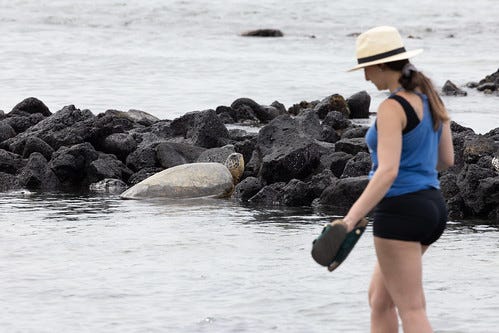
At Punalauu Beach, a swath of beach is clearly marked as off limits, with rocks forming the lines of demarcation. While we were there, no one violated that boundary.
People could still get close enough for splendid photos, but without alarming the turtles. I think that’s why there were so many more here.
Seeing them was one of the sights that will stay with me for the rest of my life.
On March 4 and 5, we visited wildlife refuges that are closed to the general public. Professional guides from Hawaiʻi Forest and Trail came along and provided the permits to access the Hakalau National Wildlife Refuge and the Palila Forest Discovery Trail, where desperate attempts are being made to keep pigs, sheep, and other invasive species from further damaging the native forest while trying to ensure that visitors don’t track in spores from a horrifying new fungal disease called Rapid ʻŌhiʻa Death, which is killing one of the most important native plants providing food to native forest birds.
What a thrill to see not just one ʻAkiapolaʻau but a father and youngster! These birds with their bizarrely mismatched bills—the upper mandible much, much longer than the lower—were even cooler than I expected, and gave me way more photo ops than I’d dared hope for.
ʻIʻiwis, ʻApapanes, a stunning Hawaiʻi ʻĀkepa the color of orange sherbet…
…and at least momentarily hearing my most yearned for lifer of the trip, a Palila, made these two days among the best of the entire trip.
Then we visited a place near and dear to Russ’s and my hearts—Hawaiʻi Volcanoes National Park, where we’d spent a very memorable day with our kids in 2000. We went to some of the exact same places, some looking pretty much the same but some much different thanks to eruptions that had taken place in the last quarter century.
ʻApapanes were everywhere. They seem to always stay backlit, but when I found one feeding in an ʻŌhiʻa Lehua tree near the visitor center, Ida, one of my fellow birders on the tour, kept it in view and directed me, so I could track it without taking my eye away from my 500-mm camera—that’s how I got my best ʻApapane photos of the trip.
And then we worked our way down the Chain of Craters Drive to one of the most glorious sights of the trip—a nesting colony of the Hawaiian form of Black Noddies. I’d seen them before—both the last time we were in Hawaiʻi and on this trip, but always way, way out on the ocean. Here they were flying in and out of crevices on a rocky wall.
The waves were huge so my photos all have a softness from the salt spray, but the birds were wonderfully cooperative—this was a magnificent way to end the last day of our birding tour.
Russ and I spent three extra days in Hilo after the tour broke up, which included some of the biggest highlights of the trip of all: spending intimate time with ʻIʻiwis and Nēnēs both.
I’ll be talking about those two splendid birds, and more, in the coming weeks.
We left Hilo on March 11. Our flight home involved a lot of wrinkles including an unexpected stop at LAX in the middle of the night, but spending over 3 hours in the Honolulu airport made up for that. They have two gorgeous gardens within the secured area of the airport where I got some of my best photos of the trip—mostly introduced birds but also one Pacific Golden-Plover.
And when we finally made it home to Duluth, seven hours after we were supposed to get here, the first bird to greet us before we were even out the door was an American Robin.
Yep, from first to last, every day of our Hawaii trip was a splendid gift.


